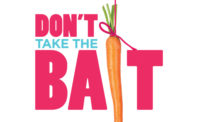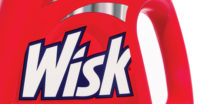Standing Out From the Crowd at Shelf


Bolthouse Farms Kids is using a full merchandising system to create a destination for parents and children in the store aisles.



A surprisingly simple but unexpected choice of turning the back of the carton into the front took Compound W’s packaging to another level.





Very few categories exist in the drug or grocery store where a single brand owns the shelf. The more common scenario is a dozen brands, all vying for consumers’ attention — national brands, niche brands, store brands, no-name brands — it’s as confusing for marketers as it is for consumers these days. And the big question is how do you win in that scenario? How do you truly stand out from the crowd?
I’d love to get all lofty and strategic on you, but there is no one right or wrong answer to how you go about carving out an ownable space for a brand. Many times it does start with strategy — uncovering the golden nugget that your brand can embody better than anyone else. It can also be taking an unexpected approach to solving a need. Lastly, let’s not knock really smart design. Whether it’s structure, graphics, merchandising or a combination of elements, great design gets noticed.
It’s so refreshing when a company comes along and challenges conventional thinking, and that’s where I’d like to start. I want to share with you a brand that is by no means first to market but has taken an unorthodox approach to launching a new line of products that you can’t help but admire.
BOLTHOUSE FARMS KIDS: REDEFINING HOW WE SHOP
When Bolthouse Farms decided to develop a line of healthy beverages and snacks for kids, the brand saw it as a bigger opportunity to redefine the way moms (dads too!) shop for these items. Bolthouse set out to create a destination in the produce aisle to give consumers a one-stop-shop for nutritious kid foods and snacks.
The proposition is a no-brainer for retailers who now have the opportunity to offer real value to consumers and maximize shopability for the growing category of healthy, fresh kids’ snacks. The idea behind this new launch is that Bolthouse Farms provides retailers with a full merchandising system to implement on shelf and maintains the destination on an ongoing basis.
And, of course, the brand will offer an array of healthy Bolthouse Farms Kids branded products that are fruit and veggie based including smoothies, fruit tubes and snacking carrots. We worked with Bolthouse to create the brand look and feel as well as packaging, merging the breakthrough nature of the idea with strategically driven design. The design is a balance of achieving a fresh and ownable look while remaining familiar. That was very important, because we’re asking consumers to shop for kids’ snacks in a new way. The products need to look familiar, appetizing, healthful and, at the same time, get the approval of the child sitting in the cart.
This isn’t simply a billboard for the Bolthouse Farms Kids brand, however; this new section will feature a host of other brands and offerings such as precut fruit, purees, and fruit and vegetable snack packs. It’s so smart and one of those times when you ask yourself, “Why didn’t someone do that sooner?”
With Bolthouse Farms Kids launching literally as this article went to print, we’re excited to see this genuinely unique category approach take off.
PHAZYME: NAILING THE NEED STATE
We can’t all create a super cool new destination in store, so what do you do if you’re one of those brands that fly under the radar … way under? In the case of Phazyme, you find something meaningful to own. Of course, that’s sometimes easier said than done.
When we started working on Phazyme, the brand had been newly acquired by our client Fleet Laboratories. They had very little information on the brand to work with and a blank slate in terms of brand equities. With more questions than answers and a very modest budget, we had our work cut out for us.
We dove straight into design, maintaining perceived equities, namely the magenta color palette, and scrapping most everything else. To this day, if anyone can tell me why the brand had a giant Z in the logo, I will happily buy you lunch. We created a wide range of work — from close in to far out and playing in a number of creative territories. This was important, because we needed stimulus that would give us definitive answers about what Phazyme could own in the category. Then we put the work in front of consumers and started learning as much as we could.
The feedback was unexpected. Our female-skewed audience wanted hardcore relief, and they gravitated toward a design that encapsulated that need state: a design that fired on all cylinders and cued effective relief for consumers across the board.
The new look, featuring gas bubbles prominently, is by no means feminine or soothing (although by gas bubble standards, these are particularly nice), and the packaging doesn’t follow category norms. But it speaks to people. It speaks to them in a way that no other gas relief brand is doing, and sales, which have far exceeded expectations, reflect that.
V8 HARVEST: SEEING THE BIGGER OPPORTUNITY
The V8 Harvest brand was conceived in the club store environment, an environment that doesn’t typically scream great packaging. We viewed that as an opportunity to create something that didn’t just look fantastic but actually capitalized on some of the challenges that brands face in club.
As the first V8 offering in the fresh produce aisle, Harvest had to do more than look good if the brand was to be successful. It needed to maintain V8’s core equities while successfully competing with the fresh juice brands. Looking healthy and delicious was mandatory, but how could Harvest not just compete but stand out in an area of the store where it was somewhat unexpected?
The goal was to create larger-than-life stature on shelf, and to do that we focused on an item often overlooked. We set out to create a shipper that went far above and beyond the norm. The crate became a huge branding opportunity and catapulted the design from good to great.
By taking our bottle bursting with fresh veggies, which seemed plucked from the farmstand itself, and putting it in our “wood crate” shipper, we had the perfect club combination. Given that many club products are displayed in the shipping crate, V8 Harvest instantly had a huge billboard with extreme impact — a win for the brand and value add for the retailer.
COMPOUND W: NOT ALL BOXES ARE CREATED EQUAL
In my opinion, structure is still very underutilized in this business, and it seems stock still reigns supreme. This is understandable from a cost perspective, but if businesses can get over the initial pain of investment and logistics, the payoff potential is enormous.
There are kinder, gentler ways of affecting structure, however; it doesn’t have to be a giant undertaking. Sometimes the little things make a big difference. When Prestige Brands approached us about restaging the Compound W brand, structure was one of the elements on the table for discussion. We looked at a broad range of proprietary structural solutions for the brand including a closer in option that was custom, but it wouldn’t require a huge shift in operations.
We proposed a simple diecut that would add interest without adding cost and to flip all packs so that the back of the carton became the front. This did a couple of things really well — it gave Compound W a much larger billboard, instead of cutting up all the information, and allowed us to create strong, consistent hierarchy across the line. This simple change opened up the design and allowed the branding to really sing. The best part was, while it made a big difference in terms of the look and feel of Compound W, it required limited investment.
There are many times that we receive pushback from production teams on structure, because — let’s face it — change is hard on a lot of levels. Ideas that we imagine and render to be so lifelike and dimensional, in reality, can involve countless manufacturing and production concerns. To be successful with a structural change, it is critical to involve production and manufacturing in the process from the beginning. While that may mean more pushback, without walking in their shoes and understanding the implications of structure and limitations of an organization, even the smallest change will not be successful.
CREATING YOUR OWN STANDOUT
If you are paying attention, you’ll see an apparent pattern with all of these brands. Each example requires the brand owner and design agency — and in many cases, printer, advertising agency and a host of other partners — to think differently. Probably easier said than done, but try a few of these to get the creative juices flowing.
Empower your partners. What could you dream up if your creative brief wasn’t 12 pages? Take some of the restrictions off and let creative partners help you think differently about opportunities for your brand. We all want a successful outcome, and there are often myriad ways to achieve that. Open your eyes to the possibilities.
Don’t operate in the blind. I remember when I first started out in this business I used to cringe when the word “research” was mentioned. Now I cringe when it isn’t. Research isn’t the end all, be all, but when used appropriately it’s incredibly helpful in uncovering insights, informing and enhancing design, and highlighting both opportunities and pitfalls. And when you want to do something truly unique, validation may not make all the butterflies disappear, but it should give you the confidence to forge ahead.
Run from “cookie cutter” process. There is no magic process that design agencies know about that you don’t. Process kills creativity, and one size fits all approaches will get you one size fits all results. Check the boxes that you have to, and bend the rules where you can.
Mix up your teams. Sometimes the easiest way to get fresh thinking for your brand is to bring in fresh talent. They often don’t know all the restrictions or mandates of a brand, which can lend itself to ideas you may have never considered. We love being asked to participate on a more strategic level. Good partners are as invested in your brands as you are and should jump at the chance to help you grow your business.
Get uncomfortable. Most really great ideas come with some nervousness attached. I like to say to clients, “If we haven’t made you a little bit nervous, we haven’t done our job.” While uncomfortable might feel, well, uncomfortable, think of it as a positive — a way to gauge a potentially compelling new idea.
Go on vacation. Sometimes your best ideas are born when you step away and get out of the day-to-day minutia of work and life. Go sit in the sun and take a mental break; pop out and walk the aisles of a new store; play with your kids. Plan your next team meeting at the park. Break out of your routine so your mind can break out of routine thinking.
Every brand, be it cookies or detergent, can create a standout moment on shelf, but you can’t keep operating the same way and expect a different result. Stop putting limits on your creativity and get ready to shine.
Pamela Long is a partner at New York-based brand design consultancy Little Big Brands (www.littlebigbrands.com). Feel free to connect with her at pam@littlebigbrands.com.
Looking for a reprint of this article?
From high-res PDFs to custom plaques, order your copy today!











